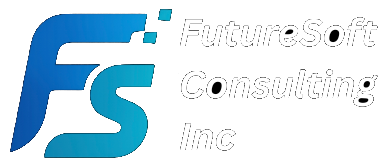Bridging the Gap Between Machine Learning and Real-World Impact
Machine Learning (ML) has become central to modern business transformation. Yet, many enterprises still struggle to operationalize their ML efforts — with models stuck in experimentation, rarely reaching production. That’s where MLOps (Machine Learning Operations) comes in.
MLOps bridges the gap between data science and IT operations, ensuring models are deployed, monitored, and scaled efficiently — much like DevOps revolutionized software delivery.
Here’s how to bring MLOps to life in your enterprise and turn AI ambition into real-world results.
1. Understand What MLOps Really Means
MLOps is not a single tool — it’s a framework that integrates machine learning lifecycle management, automation, and continuous improvement.
It brings together teams across data science, engineering, and operations to deliver ML models faster and more reliably.
Core goals include:
Streamlined data preparation and model training
Automated model deployment and versioning
Continuous monitoring, validation, and retraining
2. Build a Strong Foundation with Cloud Infrastructure
Enterprises can’t scale MLOps on spreadsheets or local servers. Cloud platforms like AWS, Azure, and Google Cloud provide scalable compute, storage, and orchestration tools to manage large-scale ML pipelines.
For AWS users:
Amazon SageMaker handles end-to-end MLOps — from model training to deployment and monitoring.
AWS CodePipeline and CodeBuild integrate CI/CD for ML workflows.
CloudWatch ensures observability and performance tracking.
3. Automate the ML Lifecycle
Automation is the heartbeat of MLOps.
Use CI/CD principles to automate:
Data ingestion and preprocessing
Model training and hyperparameter tuning
Testing and validation before deployment
Deployment to production with rollback capabilities
This not only improves reliability but also accelerates innovation cycles.
4. Implement Model Governance and Monitoring
A model in production is never “done.”
Models degrade as data evolves — a phenomenon known as model drift.
Enterprises must continuously track performance and re-train models to maintain accuracy.
Set up automated model performance dashboards, version control for training data, and audit trails for compliance and accountability.

5. Foster Collaboration Between Data Science and IT Teams
The biggest barrier to MLOps success isn’t technology — it’s culture.
Traditionally, data scientists focus on experimentation while IT teams manage infrastructure and deployment. MLOps unites them with shared objectives, metrics, and communication channels.
Establish cross-functional teams and encourage joint ownership of the ML lifecycle from data preparation to ongoing maintenance.
6. Scale Responsibly with Ethical AI
As ML becomes embedded in business decisions, governance and ethics are vital.
Implement explainability frameworks, bias detection, and compliance checks to ensure transparency and fairness in AI-driven outcomes.
MLOps should empower responsible innovation, not unchecked automation.
The Road Ahead
When implemented correctly, MLOps transforms machine learning from isolated experiments into enterprise-scale solutions that deliver continuous value.
By combining automation, governance, and collaboration, your organization can unlock the full potential of AI — making models smarter, faster, and more impactful across every business function.



